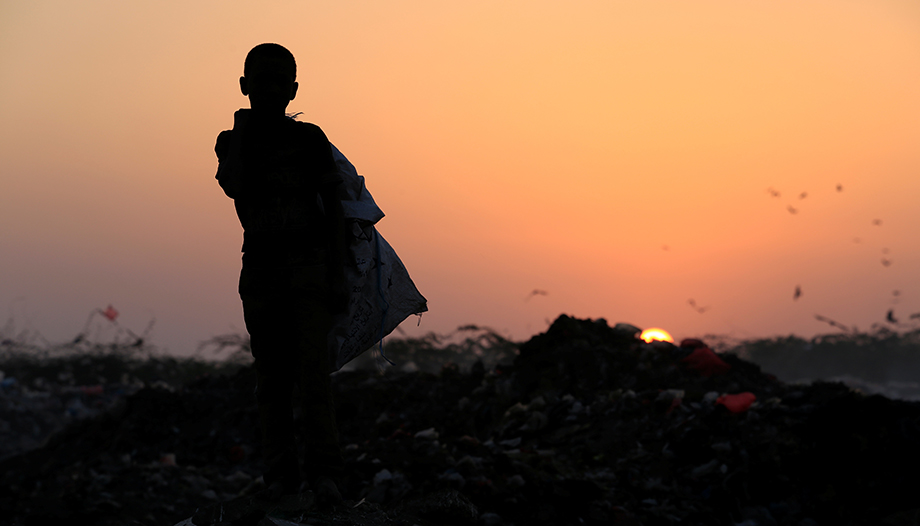In a previous articleWe recalled the other ancient name of Ethiopia, Abyssinia, from the Habeshat (Abyssinians), one of the first Semitic-speaking Ethiopian peoples of Sud-Arabic (Sabaean) origin, who had colonized the Ethiopian plateau as early as pre-Christian times.
Well, this people, the Sabeans, are originally from Yemen, a nation located in the extreme south of the Arabian Peninsula, which has been the cradle of ancient civilizations, although today it is one of the poorest countries in the world, plagued for decades by famine and civil wars, in particular the one that today has as its protagonist the armed group of the Huthi (Shiite-Zaydi), supported by Iran, against the central government and other Sunni-inspired groups.
Some data
Yemen, land of natural wonders, such as the island of Socotra, and architectural wonders, such as Shibam (called the Manhattan of the desert), the ancient city of Sana'a or the city of Taiz (to name a few) is today a republic that, de juremanages the entire territory of the country.
However, de facto, due to destabilization following the civil war that started in 2015, there are two governments at loggerheads: one, the one recognized by the international community, is led by Prime Minister Ahmad Awad bin Mubarak (in power since February 2024); the other by Abdel-Aziz bin Habtour of the General People's Congress (party of Arab nationalist ideology founded by the first president and dictator of unified Yemen, 'Ali 'Abd Allah Saleh, later assassinated in 2017 by Houthi rebel militias as part of the Yemeni civil war).
The already complex political situation is aggravated by the presence of terrorist groups such as Al Qaeda in the Arabian Peninsula (AQAP) and the Islamic State (ISIS), which operate in parts of the country. The capital itself, Sana'a, is not controlled by the legitimate government, but by the Houthi rebels, so that Aden, the country's fourth largest city and main port, is considered the provisional capital.
The total area of Yemen is about 528,000 km² (slightly larger than Spain). The country is bordered to the north by Saudi Arabia, to the east by Oman, to the south by the Gulf of Aden and to the west by the Red Sea.
The population is around 30 million, with a high population growth and an average age of less than 25 years. The majority of Yemenis are of Arab ethnicity, and the official language is Arabic, although there are small communities that still speak South Arab languages (Soqotri, Mehri, etc.), descendants of the ancient South Arab language (other than Arabic) that was spoken in the region at the time of the Sabeans.
Islam is the predominant religion, with a Sunni majority (53%) and a sizeable Shia minority (47%), mainly Zaydis. Only 0.05% of the population does not practice Islam (there are small communities of Christians and Hindus), and the very ancient Yemeni Jewish community emigrated en masse to the newly founded Jewish state after the birth of Israel. The last handful of Jews remaining in the country, threatened by both Al Qaeda and Shiite rebels, fled to Israel or the United States in 2009.
Ancient history: Sabeans and Himyarites
As we said at the beginning, Yemen (from the Semitic root y-m-n, meaning both "right" and "south", "south": Ben-yamìn, or Benyamìn, the last son of Jacob, in Hebrew means "son of the right", or "of good fortune") has seen great cultures and civilizations flourish on its territory, also because of its territory characterized by a variety of landscapes, including mountains, deserts and coasts. The central mountainous regions are particularly fertile, while the coastal areas are warm and humid.
Between the 9th century BC and the 6th century AD, several kingdoms settled in the region. Among them, the kingdom of Sheba, famous for the legendary queen who visited King Solomon in Jerusalem (mentioned in both the Bible and the Koran).
The Sabeans, who spoke southern Arabic, were skilled traders of incense and spices, for which the area was also famous among Greeks and Romans. They were also excellent builders, so much so that they created one of the wonders of the ancient world, the Ma'rib dam (of which some ruins can still be admired today), built in the 7th century BC, which was one of the most advanced hydraulic engineering works of antiquity. This dam allowed the irrigation of a large area of land and made the region one of the most fertile in Arabia, to the point of being known as Arabia felix.
The dam was rebuilt several times over the centuries, but its final collapse around 570 AD (just at the advent of Islam) contributed to the ultimate decline of the kingdom of Sheba.
Other great kingdoms were those of Ma'in and Qataban, but above all that of Himyar (the Himyarites), whose main city, Najràn, was known both for the products of its fertile fields and for its trade, to the extent that it was the starting point of the most important caravan route between Syria and Arabia (also traveled by Muhammad himself when he traded aromas with Syria) and was mentioned by Claudius Ptolemy, the Greco-Roman geographer, in his work Geography.
It was precisely in Najràn that the infamous episode of the "Homerite martyrs" (i.e. Himyarites) took place, whose history is linked to the Himyarite king Yusuf As'ar Yath'ar, better known as Dhu Nuwas, who, converted to Judaism, carried out a policy of persecution against the Christians of his kingdom that culminated, in 523 AD, with the massacre of 20,000 Christians of the region, with the massacre of 20,000 Christians, men, women and children, burned alive, it is said, in a great burning pit. The most famous of these martyrs is Saint Areta of Najràn, who was the head of the local Christian community. The Catholic Church commemorates St. Areta and the Homerite martyrs on October 24.
It is said that even Muhammad, the founder of Islam, felt great admiration for these martyrs, whose story had become famous shortly before his birth (it is described and condemned by the Koran) due to the great indignation caused even far from the Himyarite kingdom, to the point that the Christian king of Axum (in Ethiopia), with the support of the Byzantine Empire, intervened to depose Dhu Nuwas and put an end to the Himyarite dynasty, establishing Axumite control over the region.
From the arrival of Islam to the present day
From the 7th century AD, the country underwent rapid Islamization. The new faith was accepted by the locals, who contributed to spreading it beyond the Arabian Peninsula, especially in East Africa and Southeast Asia. During the medieval period, the region was under the control of several Islamic dynasties, such as the Abbasids, Fatimids and Rasulids.
From the 16th century, Yemen also became part of the Ottoman Empire, which maintained control alternating with local dynasties, in particular the Zaydi Imams, a Shiite sect that ruled the northern mountainous regions. The power of the Zaydi Imams was consolidated in 1918, after the end of World War I and the Ottoman withdrawal, with the creation of the Mutawakkilite Kingdom of Yemen.
In the south, the port of Aden had become an important British trading base. The British presence then gradually extended to the so-called Aden Protectorate, which grouped together the numerous sultanates and sheikhdoms of the region. It was the beginning of a division, between the north and the south of the country, which would have long-lasting consequences in Yemeni politics.
In 1962, an Egyptian-backed military coup overthrew the Zaydi imam of the north and proclaimed the Yemen Arab Republic (North Yemen). Years of civil war followed between republican and royalist forces, supported by Saudi Arabia. The civil war ended in 1970 with the victory of the republicans and the establishment of a republic.
The south, on the other hand, became independent in 1967, after a long conflict against the British, as the People's Democratic Republic of Yemen, with a Marxist-Leninist government supported by the Soviet Union. This state was unique in the region for its communist ideology and remained practically isolated from the rest of the Arab world.
On May 22, 1990, North Yemen and South Yemen finally united, forming the Republic of Yemen, with Ali Abdullah Saleh, former founder of the Arab nationalist General People's Congress party and president of the North, as president (and dictator) of the new unified state.
However, the transition was not smooth and tensions between the north and south persisted, culminating in a civil war in 1994, in which the north, led by Saleh, managed to prevail over the south.
During the 2000s, Saleh's government faced numerous problems, including conflict with Houthi rebels in the north, secessionist movements in the south, and the presence of terrorist groups such as Al Qaeda in the Arabian Peninsula (AQAP).
The Arab Springs of 2011 also produced massive protests in Yemen against corruption, unemployment and repression by Saleh's government. After months of protests and violence, Saleh was forced to step down in 2012, ceding power to his deputy, Abdrabbuh Mansur Hadi, in a transition plan brokered by the Gulf Cooperation Council. A transition that, however, did not heal the deep political and social divisions.
In 2014, Houthi rebels took control of the capital, Sana'a, and forced Hadi to flee. This triggered a full-scale civil conflict in 2015, with the intervention of a military coalition led by Saudi Arabia (guilty of massacres against the civilian population) in support of Hadi's government.
The conflict has caused one of the world's worst humanitarian crises: according to UN estimates, at least 7,400 to 16,200 people have died in Yemen since the outbreak of the war, which has also displaced more than 3 million people and caused widespread famine.
To date, the country remains divided and unstable, with the north under the control of Houthi rebels, the internationally recognized government controlling parts of the south and the west coast, with Saudi coalition support, and the Southern Transitional Council (STC) claiming autonomy in the south.
Peace efforts, mediated by the UN and other international organizations, have led to ceasefires that, unfortunately, are only temporary, and a lasting resolution of the conflict still seems far off. The humanitarian crisis continues, and the civilian population suffers from hunger, disease and a lack of the most essential services.








